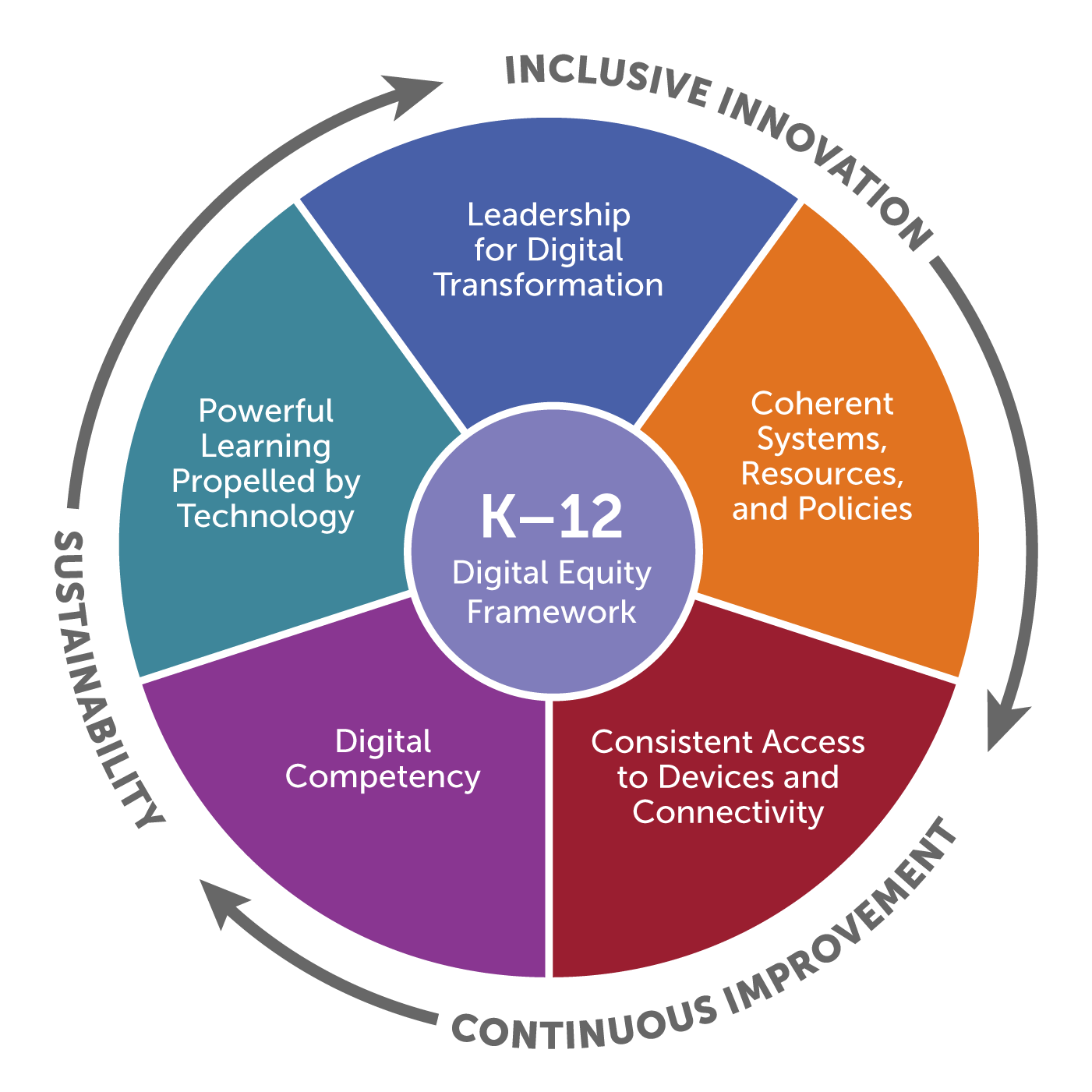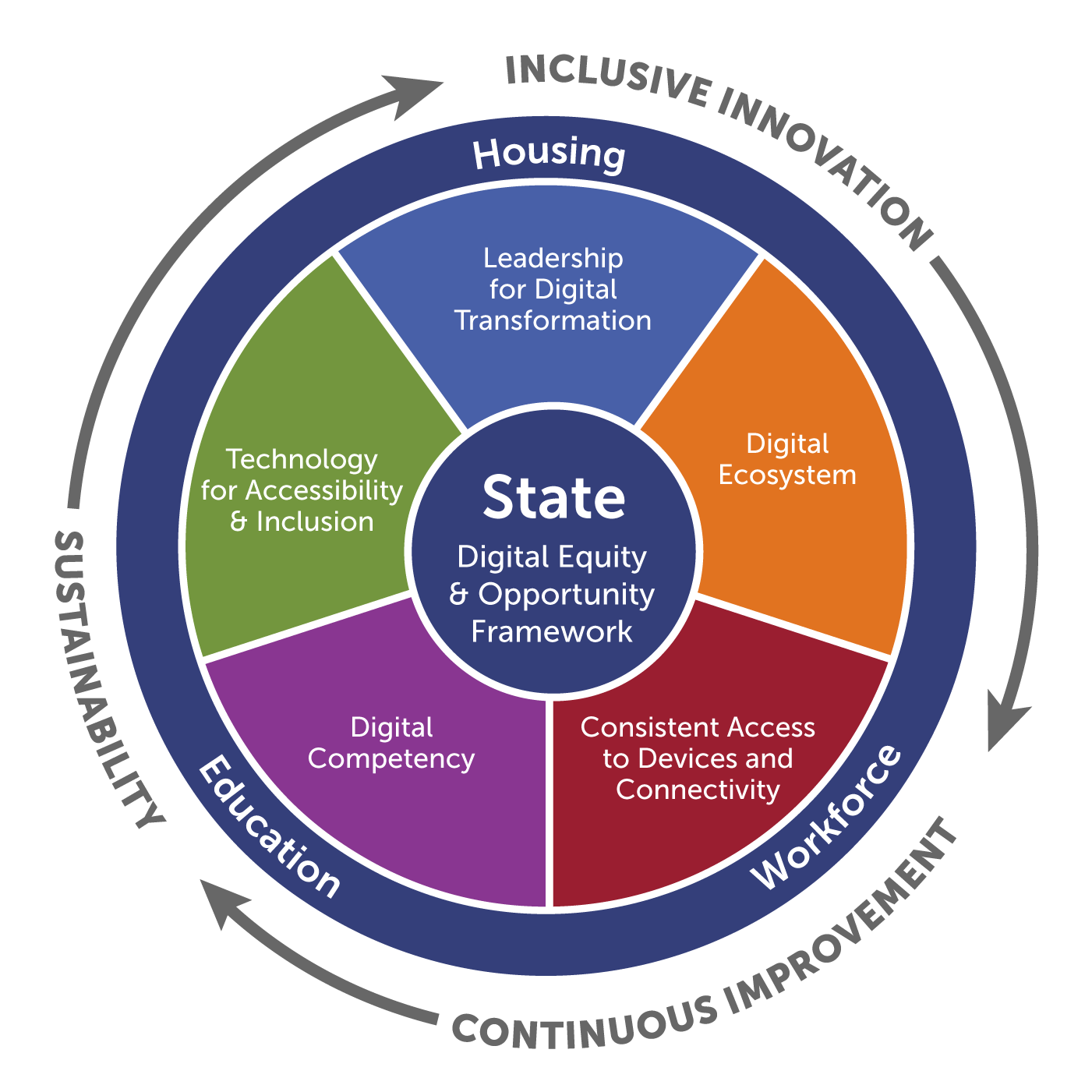
Recognizing that providing technology and connectivity alone is not the answer, our digital equity efforts have moved beyond access to devices and reliable high-speed internet. Digital Promise’s new Digital Equity Framework provides guidance and policy recommendations for states and K-12 education systems to bridge digital divides and improve outcomes for all learners. Applied together, it will ensure that all people living, learning, and working in the United States are able to thrive in today’s digital world.
K-12 schools are a crucial pathway for developing digital literacy, ensuring equitable access to technology, and preparing students for success in the digital age. The K-12 Digital Equity Framework is a systematic way for leaders, teachers, and coaches to advance digital equity by closing the digital teaching and learning gap in schools. It provides strategies to bridge the digital access, design, and use divides outlined in the 2024 National Educational Technology Plan. 
Through the Digital Equity Framework, school and system leaders can establish a foundation capable of not only transforming current teaching practices and learning experiences, but also future-proofing their schools for the evolving technological landscape.
The framework is composed of five interdependent domains:
While we celebrate advances made in each individual domain, digital equity can be realized only when all five domains are present, and the framework is incomplete if any of the domains are lacking. For example, if leaders and coaches do not integrate technology into essential systems like professional learning communities, coaching methods, and assessment mechanisms (Coherent Systems, Resources, and Policies), they may struggle to maintain and sustain effective, technology-enhanced teaching and learning into the future.
An additional framework which will provide similar guidance for institutions of higher education will be released in the near future.
 The State Digital Equity and Opportunity Framework sets the enabling conditions for equitable access, use, and workforce readiness for all people in our digital society. It outlines strategies to expand state-supported programs designed to improve broadband infrastructure and enhance digital literacy in the United States. Its holistic approach places learners at the center of policies originating from three economic sectors: Education, Housing, and Workforce, with a focus on historically and systematically excluded communities, as well as citizens with learning variability.
The State Digital Equity and Opportunity Framework sets the enabling conditions for equitable access, use, and workforce readiness for all people in our digital society. It outlines strategies to expand state-supported programs designed to improve broadband infrastructure and enhance digital literacy in the United States. Its holistic approach places learners at the center of policies originating from three economic sectors: Education, Housing, and Workforce, with a focus on historically and systematically excluded communities, as well as citizens with learning variability.
At the heart of the Digital Equity Framework are three core principles: Inclusive innovation, which emphasizes collaboration with those most impacted, underserved, and underrepresented; Continuous Improvement, which reflects a commitment to always striving for more equitable outcomes; and Sustainability, which underscores the belief that these efforts require thoughtful planning for the long term to ensure enduring impact. These principles have not only guided the development of this framework—but also serve as an expression of our highest hopes for its use to support learners.
Explore the Digital Equity Framework and dive deeper into the context behind it in our new paper, A Framework for Digital Equity.